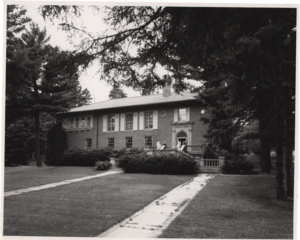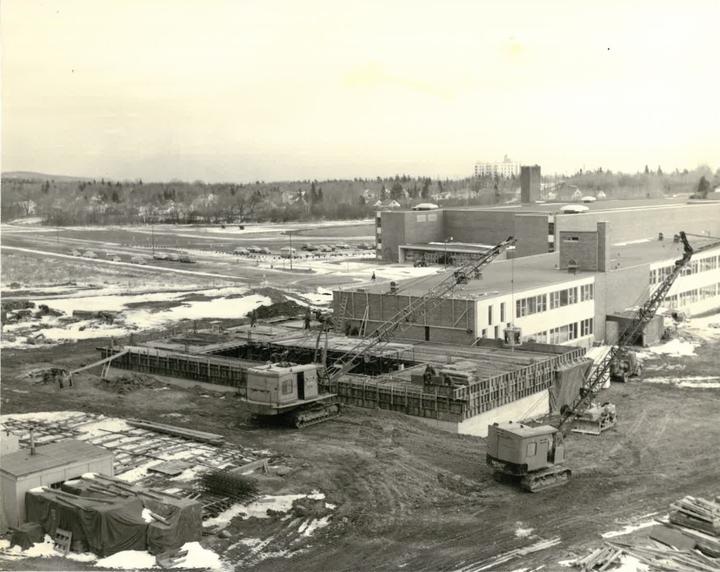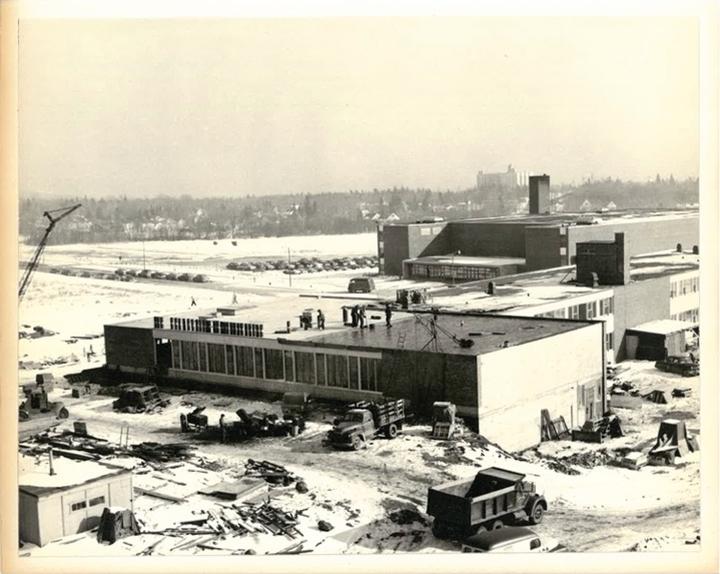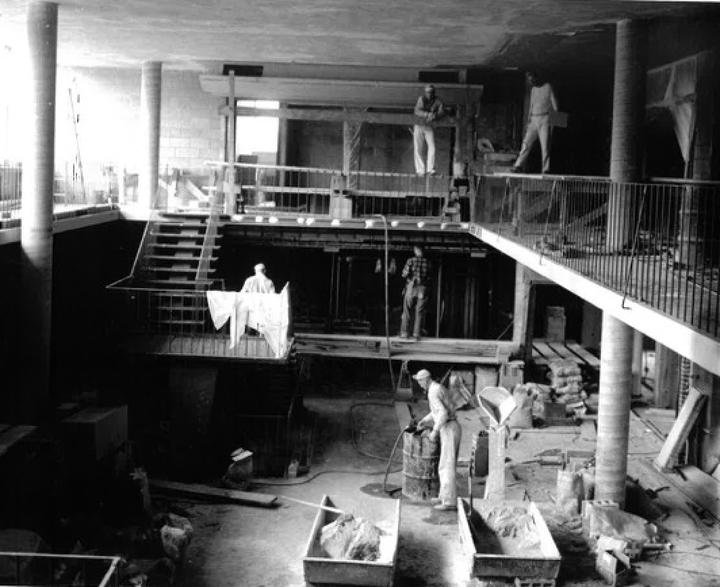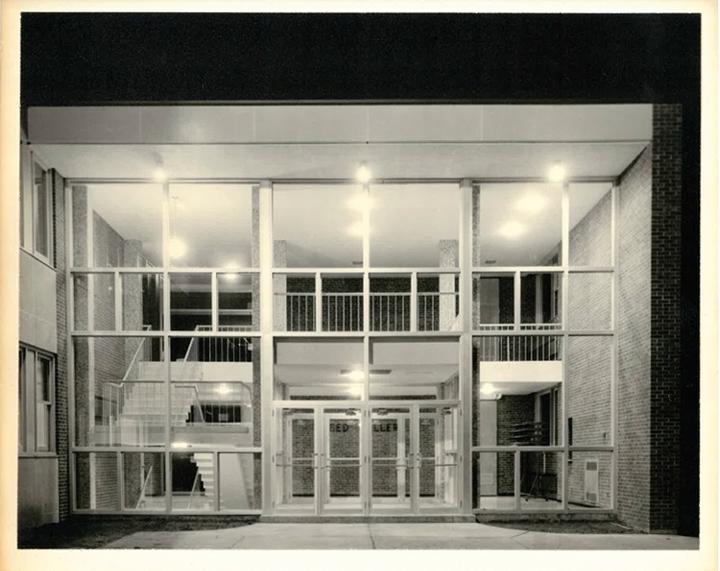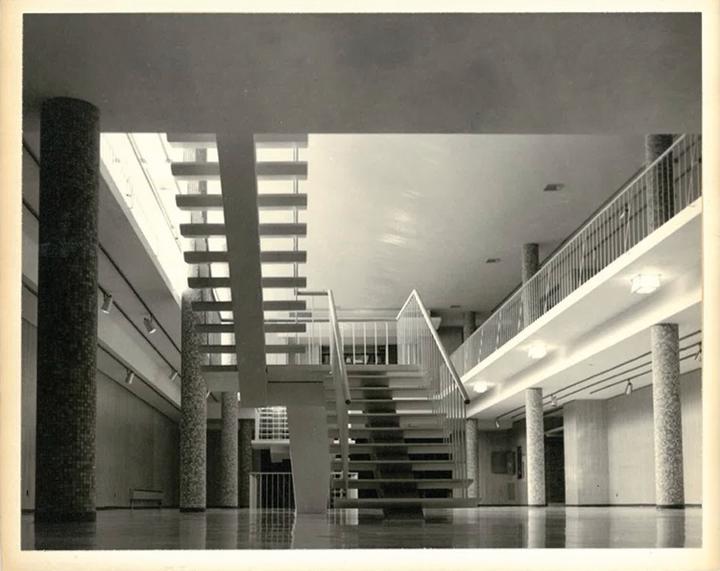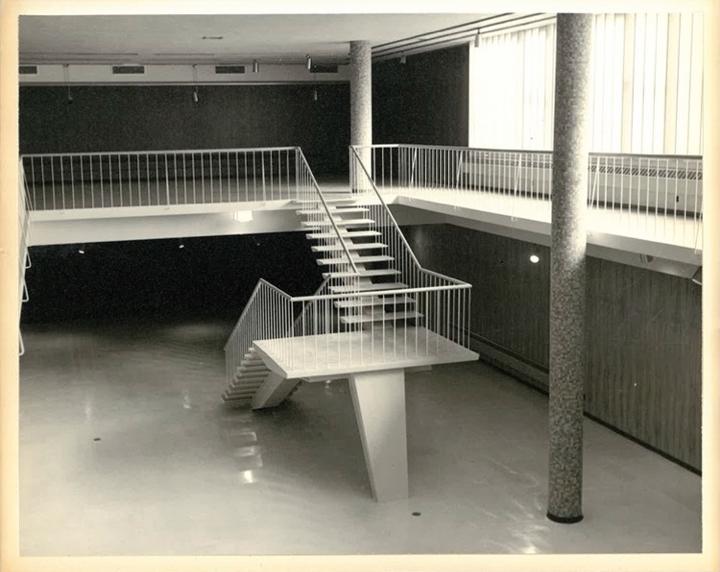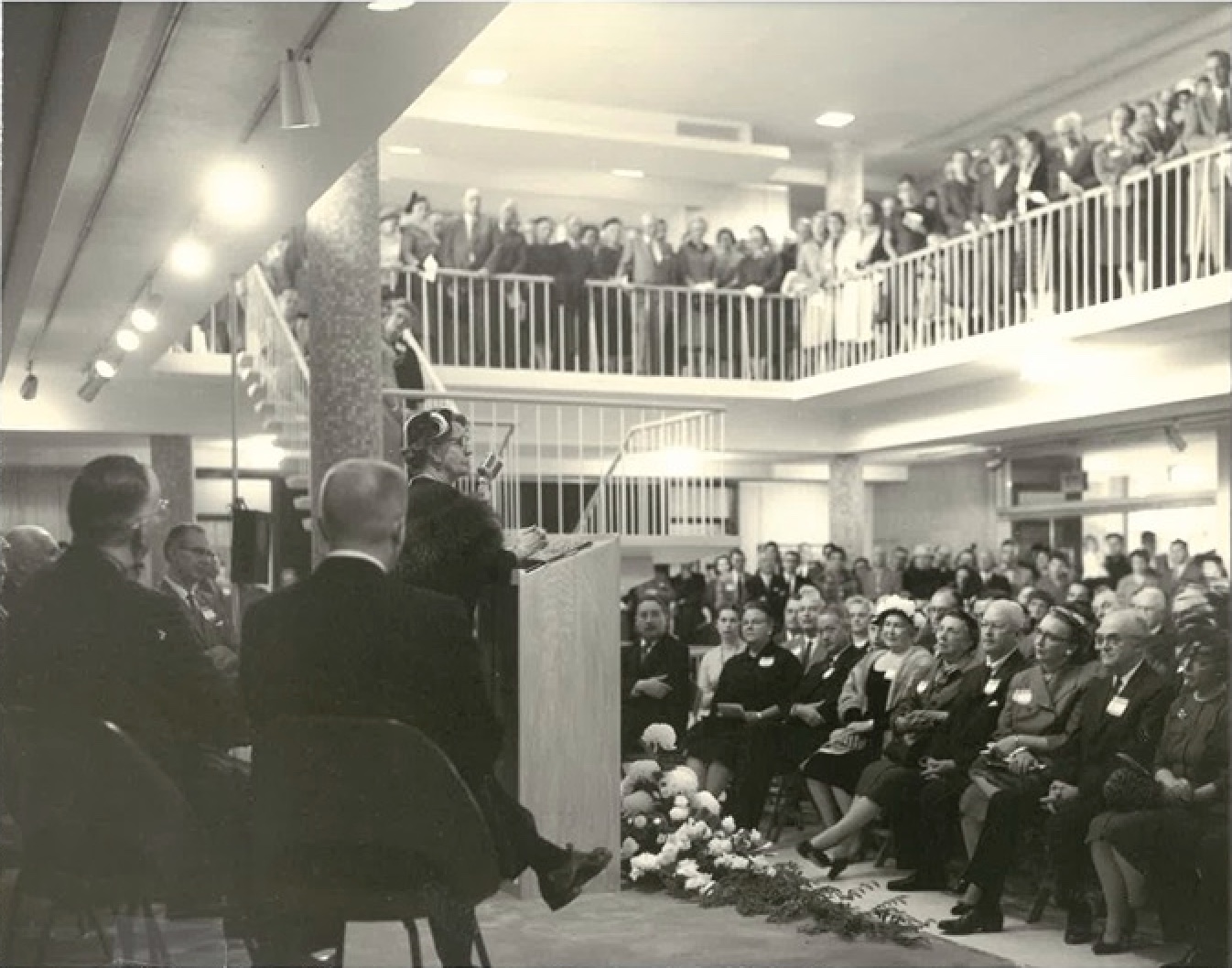
Speaker: Alice Tweed Tuohy
Photo: Tweed Museum of Art Archives
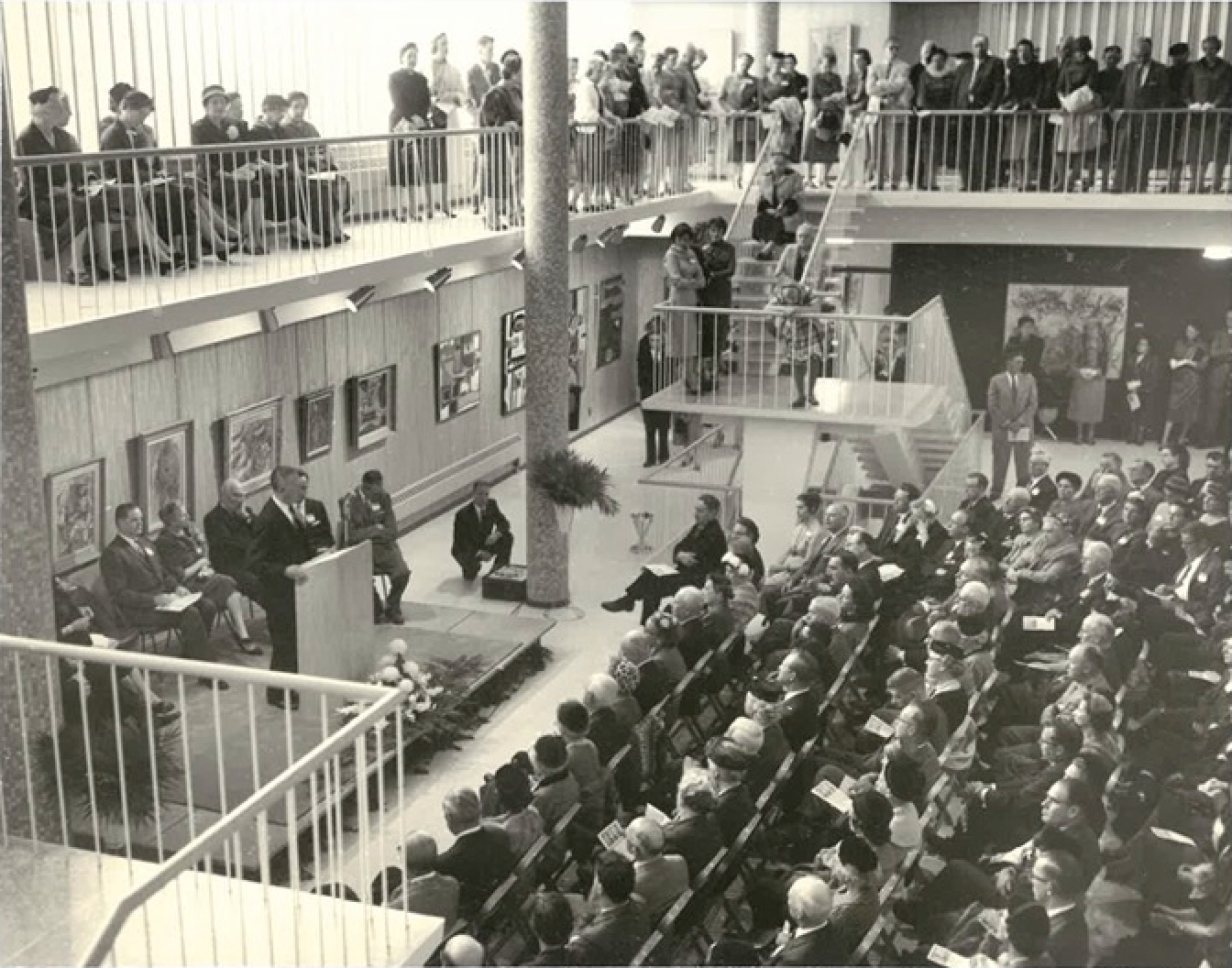
Speaker: James Lewis Morrill, President, University of Minnesota
Photo: Tweed Museum of Art Archives
1965
The Tweed Museum’s facilities expanded with the support of Mrs. Alice Tweed Tuohy. Almost doubling the exhibition space, the new building made it possible to show much larger segments of the permanent collections and provided a gallery to showcase student work.
1977
The Court Gallery and new Museum offices were added thanks to a grant from the Alice Tweed Tuohy Foundation.
1988
The construction of the Sax Sculpture Conservatory and Sculpture Courtyard were added with an endowment gift from Simon, Milton, and Jonathon Sax.
2007
The Museum acquired the Richard E. and Dorothy Rawlings Nelson Collection of American Indian Art. A modest yet comprehensive collection, it inspired the Museum to begin collecting contemporary American Indian arts.
2009
The Tweed Advisory Board raised funds for the installation of a fifty-foot-long display case for the American Indian works from the Richard E. and Dorothy Rawlings Nelson collection (the Nelson Case).
2016
The Museum upgraded its heating, ventilation, and air conditioning systems to improve air quality and provide a stable environment to protect and preserve the Tweed’s collections.
2020–2022
Given the generous funds and grants by the Alice Tweed Tuohy Foundation, the Tweed garnered much-needed dedicated educational spaces and updated to a more contemporary and attractive environment.
The removal of the carpet on the second floor revealed the beautiful 1960s concrete floor, giving the space a professional look. The Tweed and on- and off-campus communities benefit from new spaces, such as the Study Room on the second floor, that allow for teaching with original artworks. There is also the Maker/Communities Space near the entrance, a dedicated space for K-12 teachers to organize workshops and arts activities using a variety of media—furnished with colorful pieces by Loll Design—and an office for the Museum’s educator.
The Gift Store, which has existed for decades, was relocated to a larger space and given more prominence. Glass doors throughout allow visitors to peek in. Its contemporary lighting showcases the local merchandise for which Tweed’s Gift Store is celebrated.
During the pandemic in 2021–2022, the Tweed hosted a traveling exhibit, Black Survival Guide, or How to Live through a Police Riot, featuring Hank Willis Thomas’s titular work (2018). Organized by the Delaware Art Museum, Wilmington, the exhibition received generous support from Art Bridges and was funded in part by the John T. and Elizabeth C. Adams Arts Fund of the Community Foundation, the advisory board members of the Tweed Museum of Art, and members of Duluth's communities.
Other recent major programs include the National Endowment for the Humanities–funded 2020 exhibit Creating Apart: Local Artists Respond to a Global Pandemic, and the 2020–2021 retrospective of Ojibwe artist Carl Gawboy, in addition to contemporary, site-specific temporary art (Adam Swanson; Jonathan Thunder; Moira Villiard, Carla Hamilton, and Iasha Bolton), and student-launched and faculty guest–curated exhibits.
